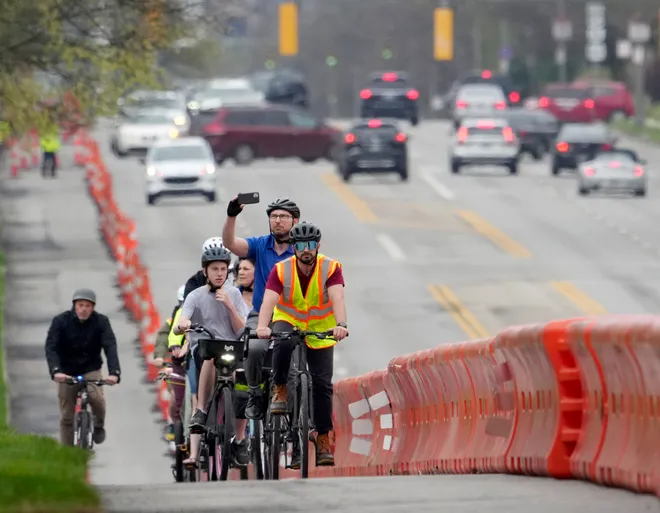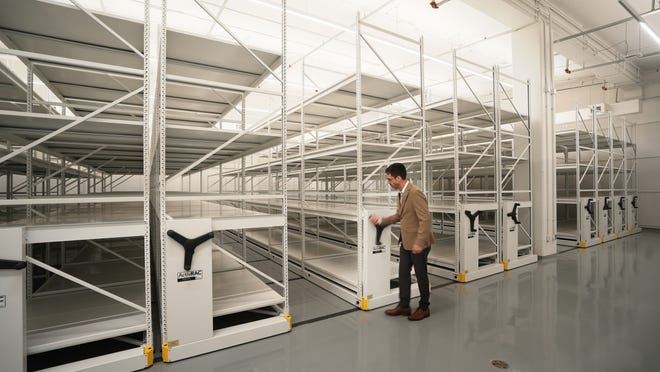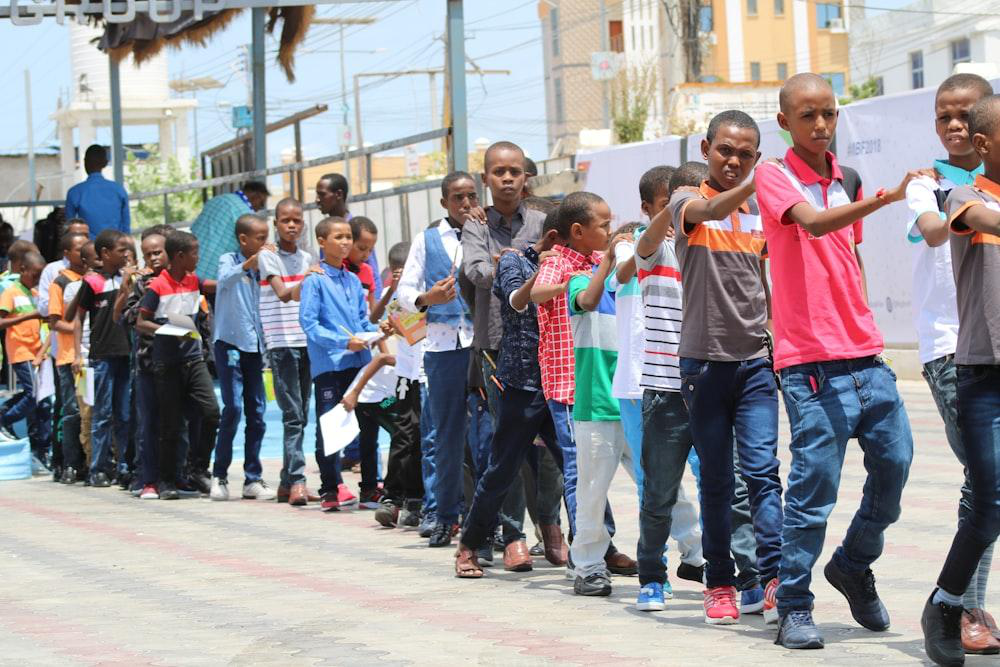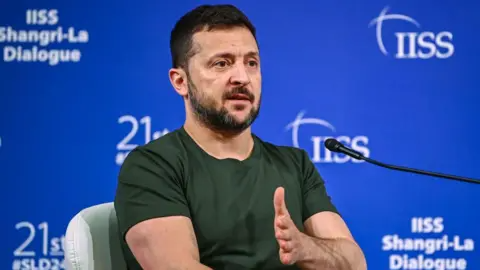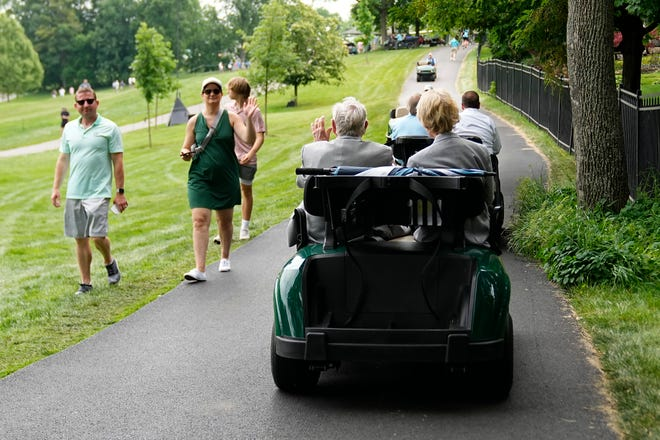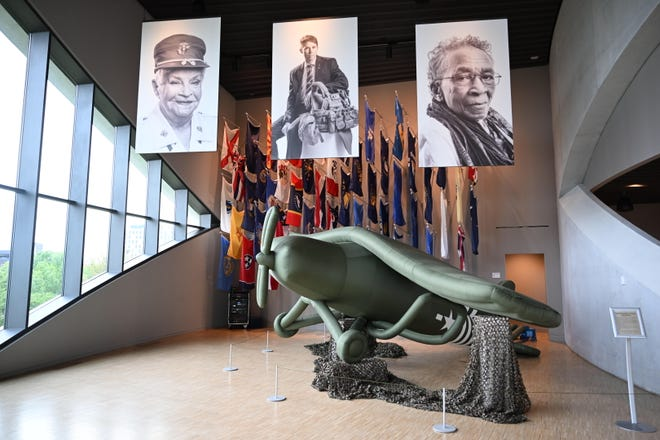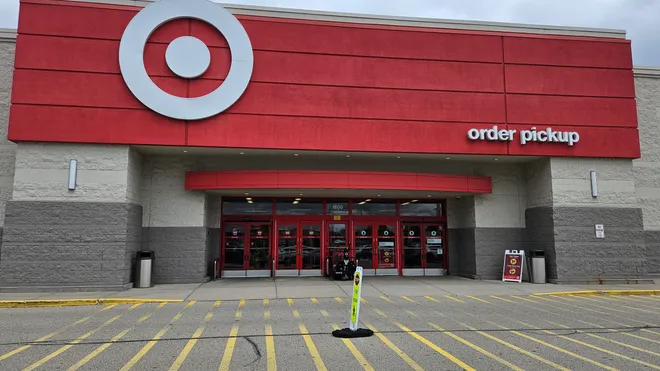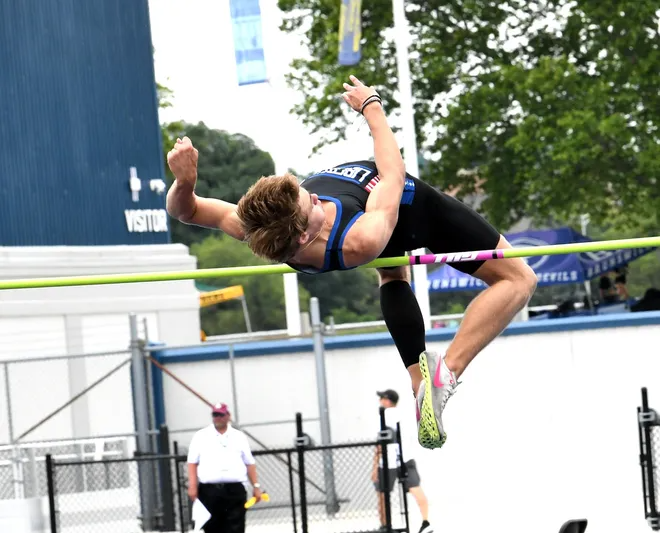It was only a test, but for cyclists who have to get around much of Columbus riding in vehicle traffic with no bike lanes, it was another hopeful pedal forward.
The Columbus Department of Public Service held a pop-up event Wednesday afternoon along East Broad Street on the East Side to test out quick-build bike barriers intended to create protections for bicyclists by providing separation from vehicle traffic that would reduce the risk of being struck.
Dozens of cyclists, some experienced and some novice, attended the event, ignoring the gray, overcast skies that seemed ready to unleash a shower at any moment. The city had constructed a 10-foot-wide, two-way bicycle lane along the berm of East Broad Street using bright orange, water-filled barriers and traffic cones.
Bicyclists started in the parking lot of Wolfe Park and snaked up Alum Creek, crossing the bridge over the creek and traveling up Franklin Road South, then veered right onto Franklin Park West where they rode the final leg on East Broad Street. Some participants brought their own bicycles and helmets, while others used electric CoGo bikes and helmets provided by the city.
After bicyclists finished their route, city officials handed out a questionnaire to gather feedback on the bike lanes, asking such things as their comfortability riding in the bike lane traveling both against and in the direction of traffic, and riding with less experienced riders. The main focus of the test event was to test the width of the barriers to see if it would be conducive for two-way bicycle traffic, said Brian Ashworth, the city’s transportation planning manager.

Ashworth and other city officials said that Wednesday’s pop-up is the first step in determining what safety features will be best for bicyclists, and that feedback from the event as well as future ones will inform future bike lane construction. The city plans to hold another demonstration, funded by a federal grant, in the summer in the same area, where they will have barriers on each side of East Broad Street between Parsons Avenue and Nelson Road so that officials can see how motorists react to the barriers as city officials expect the barriers to slow vehicle speeds.

“We know bikes are a main mode of transportation for people, and we want to make sure that people can ride safely,” Columbus City Councilmember Lourdes Barroso de Padilla told the Dispatch. De Padilla said that the city wants to concentrate on investing in bike lanes and not so much on vehicles.
“We are focused on putting people before cars,” said de Padilla.
Michael Liggett, senior transportation planner for the city Department of Public Service, said that they are looking at multiple types of barriers that can be implemented along city streets to protect bicyclists from being hit by vehicles:
- Armadillo dividers, roadside bumps that keep cars out of bike lanes;
- K-71 Flex Posts, a beefy rubber post with a low height that takes into account bicycle handle bars, and
- Zicla Zipper, similar in functionality to the armadillo in that it provides lane separation between vehicles and bicyclists.
Since the city is still collecting feedback to decide which type of barrier they will use, Liggett said he could not provide a cost to implement the barriers. Before the city decides on a barrier, the Ohio Department of Transportation will be resurfacing East Broad Street from Parsons Avenue to Nelson Road.
Randy Borntrager, assistant director of the Department of Public Service, said that with central Ohio projected to grow by 3 million people by 2050, the sustainable path forward is to invest more in bicycle infrastructure to address the region’s transportation needs. He also said that implementing barriers will address excessive speeding by motor vehicles — a factor he says is often the case when it comes to cyclist accidents.
“Columbus has been a car-focused city,” said Borntrager. “As the population grows, we can’t just add 3 million more cars.”
Bike lane test comes as calls for protection for bicyclists grow

David Roseman, 68, of Columbus’ North Side, said he is an avid bicyclist and knows all too well the dangers of riding on the street. He was struck by a vehicle four years ago and suffered a broken tibia and fibula. He attended the pop-up on his bike to test the constructed bike lanes and said that they need to be wider than the 10 feet the city created.
“We want to see it grow to 11 or 12 feet for two-way traffic,” Roseman said, but added that more protection is always better than nothing.

The bike lane test comes as cycling enthusiasts and advocacy groups have called on the city to add more infrastructure to protect bicyclists. The Dispatch previously reported that Franklin County is one of the most dangerous places for bike accidents. Data obtained from the Ohio Highway Patrol showed that Franklin County had the second highest number of crashes involving bicycles out of all Ohio counties since 2019, with Cuyahoga County reporting the most. There were 904 crashes involving bikes in Franklin County between Jan. 1, 2019, and March 11, 2024. Franklin County’s bicycle crashes account for 16% of the state’s total during that time frame.
Of those 904 crashes, 16 were fatal. 97 of the crashes resulted in a serious injury. Bicyclists have also complained about being forced to choose between riding on the sidewalk and risking a fine or riding in a roadway, where vehicle speed limits can reach up to 45 miles per hour.
“[The barriers] are long overdue,” Bill Chronister, 70, a retired Dispatch copy desk editor and an avid bicyclist, said at Wednesday’s event. While he said he was unsure about the armadillo barriers that the city is considering, he noted that more protection for cyclists from motor vehicles is always better.


